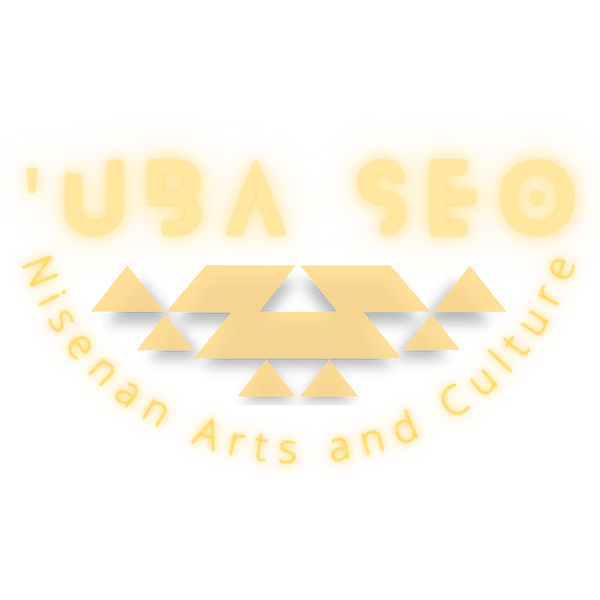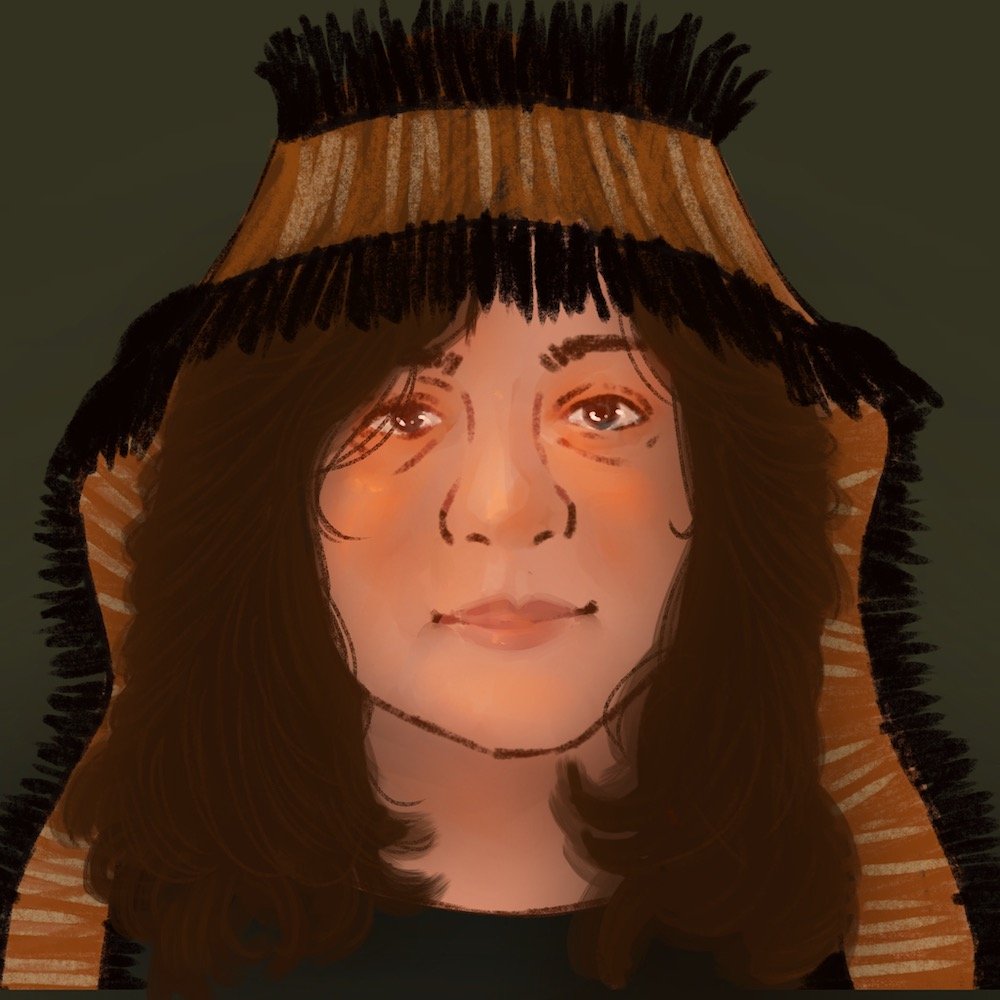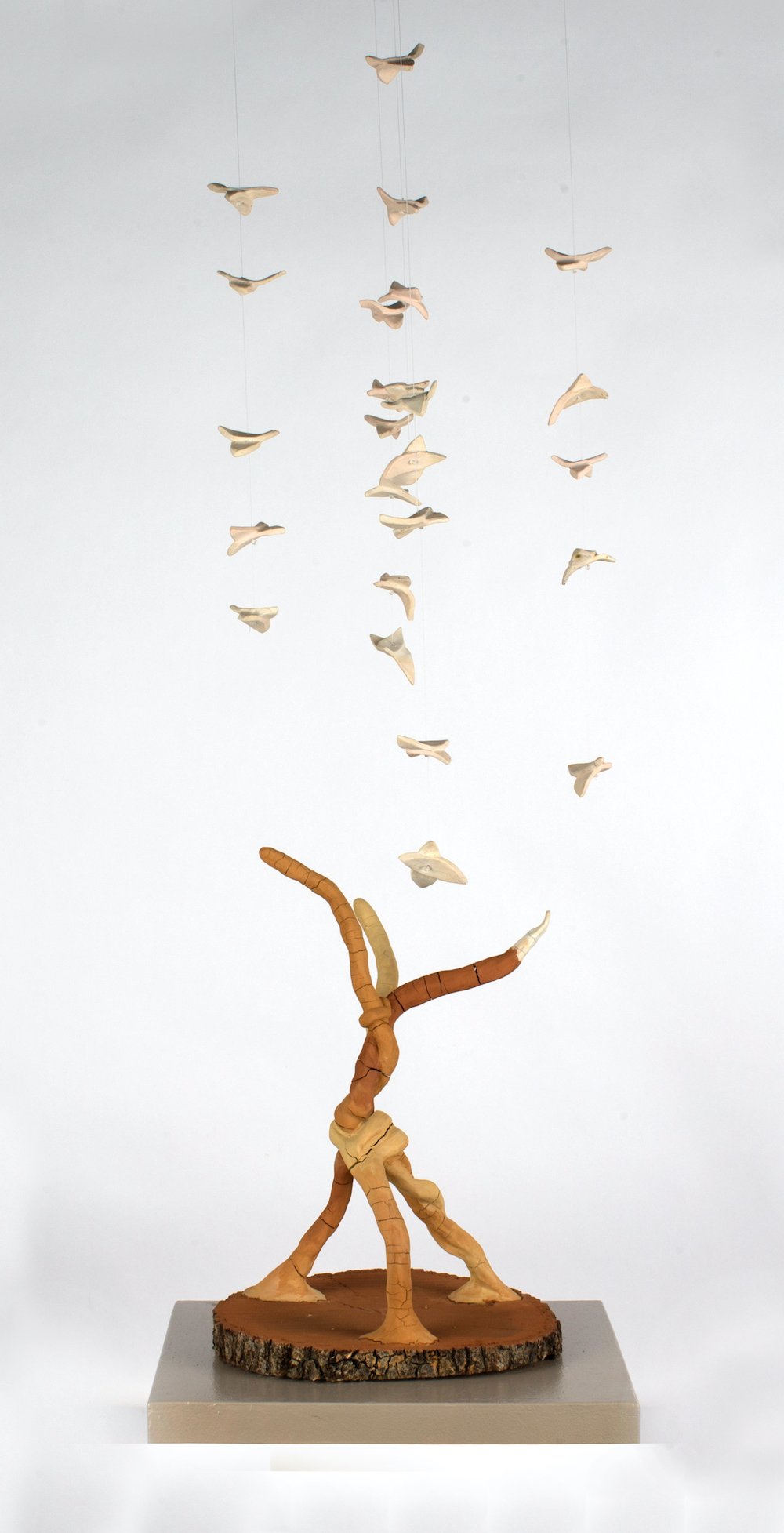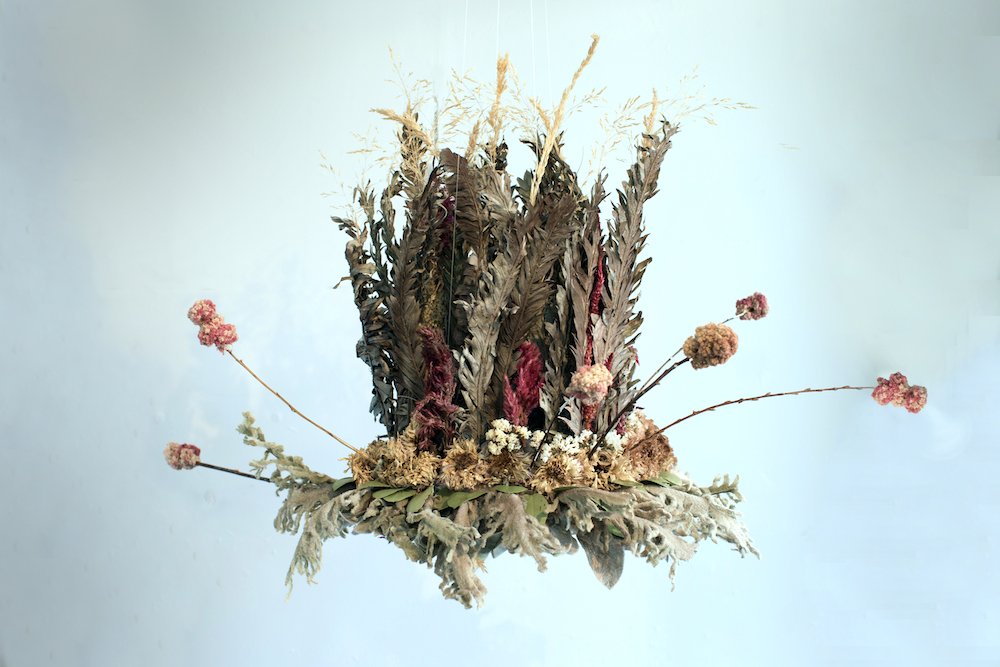
VISIBILITY THROUGH ART 2022
Perspectives on Erasure
October 8th 2022 - April 15th 2023
Visibility Through Art (VTA) is a special collaborative project which brings together local artists and the Nevada City Rancheria Nisenan Tribe. Their non-profit CHIRP guides this work under the direction of Shelly Covert (the Tribal Council Spokesperson and Executive Director of CHIRP). Each year we take about six to eight months to work with artists and the Tribe in different ways to create a collection of artworks that highlight different issues and themes that the Tribe wants to share with the broader community. This Project has been running since 2017, and has been featured in many local venues. Now with the opening of ‘Uba Seo, it has a permanent home.
This year VTA Artists were asked to work on a theme that explores the erasure of Nisenan culture and history. Artists and Tribal Members were asked to focus on a specific aspect of Nisenan existence that has been impacted by erasure. We are invited to consider: the impact of settler colonialism through the generations, of the gold rush, the boarding schools, of the laws and systems that erased and continue to eradicate Nisenan heritage.
Participating Tribal Member Artists: Ginger Covert, Lorena Davis, Sarah Thomas, Cindy Buero, Debra McBrien, Shelly Covert, Saxon Thomas, Natalie Thomas, Saxon Jr. Thomas, Colin Thomas, Karen McCluskey, Jennifer Plunkett, Brittney DePew
Participating VTA Artists: Andrés Amador, Fabienne Annick, Amanda Ashely, Nikila Badua, Maile Claire, Mira Clark, Sarah Coleman, Jennifer Crosby, Rama Cryer, Indigo Donaldson, Juli Elin, Brianna French, Jessa Hurst, Jarod Kane, Lori Lachman, Mekdela Maskal, Hannah Mcdonell, Bishop Randall, R. Rehrer, Rachel Rein, Saree Robinson, Alyssa Walz, Leilani Webb, Ursula X. Young, and Chloe Young
Two new films were added to ‘Uba Seo’s custom theater as part of this year’s VTA. The films Washed Away and Resurfacing were artist Andrés Amador’s contribution and collaboration for this years exhibit. Films are available for screening any time the gallery is open. Learn more here.
"The Flowers that Grew Like Lace" by Hannah McDonell, Ink on Paper, 6x4" __________________________ A Nisenan Elder said to her granddaughter, “There were once flowers that grew upon the ground like lace." As the grips of the gold rush and colonization tightened the Nisenan were faced with the devastating destruction to the land that surrounded them. They felt and continue to feel the loss of many sacred species of plants and animals. This erasure of species led to a significant hole in Nisenan Culture. The extent of this erasure remains unknown - with the forced taking of their language many species and names go untold.
This important Cocoon Rattle was created within the appropriate Nisenan Tribal Traditions and will one day be used in ceremony.
"wilyhaj" Bishop Randall Instagram: @bishop3333 Lampworked Sandcarved Glass, _________________________ This is a representation of a wososo, a very special tool used by jomim nishenam. wososo is created with wo’soso from a local moth. k’omi were used inside to make the rattling sound. --- wososo: Doctor's cocoon rattle, wo’soso: cocoon, wilyhaj: shake, k’omi: seed, jomim nishenam: Nisenan Doctor,
"Lorena and Eddy" R. Rehrer Digital Prints on Canvas, 12x12" _________________________ As the Tribe begins to reemerge aspects of Nisenan Culture we encounter the depths of Earth's ill health. The birds and animals necessary in the creation of traditional Regalia are as endangered as the Nisenan themselves. For now, we use art and our artist friends, to envision our future. These are portraits of two Tribal Members in traditional Flicker Regalia.
"Lorena and Eddy" R. Rehrer Digital Prints on Canvas, 12x12" _________________________ As the Tribe begins to reemerge aspects of Nisenan Culture we encounter the depths of Earth's ill health. The birds and animals necessary in the creation of traditional Regalia are as endangered as the Nisenan themselves. For now, we use art and our artist friends, to envision our future. These are portraits of two Tribal Members in traditional Flicker Regalia.
"Nisenan Healing Basket" Mira Clark, existinspired.com, Digital Illustration, 9x20" _________________________ When one was sick a Nisenan doctor would use a "medicine rock" to make the person well. The person reclined on the rock and the doctor would pass a basket over their body. Inside the basket was a white feather. When the basket passed across the afflicted part of the body the feather would change from white to gray or black. The doctor would then administer healing to that part of the body. There are several medicine rocks that were used by local Nisenan, each by a different healer. The impacts of erasure include the loss of thousands of years of accumulated knowledge in the healing arts, spiritual arts, medicine, tools, foods, and relationships with this place. The Elders were adamant to not reveal the species of bird that gave the healing feather for fear they would be hunted to extinction. Pockets of knowledge remain in the Tribe, but without the entirety of the Cultural context that once was, how can these Ancient practices ever truly be revived?
‘estom yanim, Mira Clark, existinspired.com, Photograph, 12x12" _________________________ 'estom yanim the Sacred Mountain is featured numerously in this VTA exhibit because of its importance in Nisenan cosmology. In Nisenan cosmology, it is the origin of all life and the place where Nisenan Spirits go when they die.
"Momin Nisenan" Jessa Hurst & Fabienne Annick, @lunardrip, Digital art, Mixed Media 16x20” _________________________ This piece explores the Nisenan Mermaid knowledge. Tribal Member Shelly Covert shared, "There were many stories of one-legged people with long hair who lived in deep holes in the water. There was one known to be living in Wolf Creek. These beings were described as having one foot and long hair and another that had a fin and could change faces. Nisenan were warned, 'Don’t stare at the water ripples ... or the Momim Nisenan will pull you in, and drown you.'" In one story, two young Nisenan were fishing in a deep hole and pulled one of them out. They wanted to keep him, but he wanted to be put back in the water. He told them it would never rain again if they didn’t put him back. Unbelieving, they brought the Momim Nisenan to the headman and asked to keep him. The headman said, "No, put him back." So they did...
"Nisenan Mural: Solim Ni - I Sing" Muralist: Nikila Badua | Tribal Advisor: Shelly Covert Sponsor: Haven Caravelli, Assisting Artist: Miles Toland, Youth Artist: Naomi Alani Stewart Medium: Montana Spray Paint & Acrylics on Concrete Wall Size: 25ft x 55ft _________________________ This mural features local Nisenan Tribal member Jennifer Plunkett. As she sings out to the baskets beneath the sacred Black Oak tree, her song takes on the ghostly shape of a basket pattern used by Nisenan Ancestors, while the flicker feather Regalia comes from the Earth and entwines itself around her. Culture is embedded in the Nisenan people in this way. Now is the time to sing... You are invited to go see this mural in person. Location: 309 Neal St. Grass Valley, CA
"Rebirth Through Grief" Chloe Young Watercolor, red dirt, local plants, mixed media 18x24" _________________________ This piece represents the Cry Ceremony an ancient Nisenan ritual. This ceremony is a ritual death mourning to grieve the passing of a loved one. The ceremony lasted for several days and nights. For the entirety of the ceremony, people would sing and cry to release their grief. Women close to the deceased would burn off their hair down to the scalp and adorn the ash mixed with pine pitch on their faces, chests, shoulders, and arms. The person remained in mourning until the mixture wore off naturally. After death the Spirit of the deceased travels to the sacred mountain ‘estom yanim (marysville buttes). Here they eat their first Spirit food and see their deceased relatives before traveling on to the Milky Way.
"The Medicine Rock" Lori Lachman Lachman.smugmug.com Multi-medium photo, paint, collage 11x14" _________________________ The medicine rock is an important tool for Nisenan healers. We have used the white Egret to symbolically represent the white feather that assisted in identifying a place of sickness in the body. Many tools used by healers no longer exist inside the Tribal families and many of the materials needed to create the tools are inaccessible or completely gone from the landscape. Western medicine continues to be ineffective in the Nisenan Tribal community. If we can heal the land, we will heal the people.
"Grandpa Dutch" Lorena Davis (Nisenan Tribal Council Member) Pencil and Colored Pencils on Paper 12x15" _________________________ My father was taken from his home to the Indian Boarding Schools when he was 5 years old. He was robbed of his childhood, family, and home, but mostly of his identity.
"Grandpa Dutch Rose" Alyssa Walz Pencil & Ink on Paper 10x7” _________________________ This portrait is a depiction of Dutch Rose. He was the father of 6 girls and he was one of 13 children. Elders are highly regarded for their experience and knowledge of the landscape which is passed on from elders for millennia. He was a peacekeeper and bridge builder between Nisenan families and settling families. He was kind and friendly and believed in being able to find solutions to conflict. Traditionally, the Nisenan sought out these qualities in leaders and family heads. In negotiations, family heads were important advocates for making sure all perspectives and voices were heard. Dutch was also a survivor of the Indian Boarding School System and he bore those scars throughout his lifetime, trying hard not to pass them on to his daughters.
"Forgotten Feather" Brittney Depew (Nisenan Tribal Member) Oak Cork from Berkeley State, Nails and Embroidery Thread _________________________ A feather floats, it doesn't fly Our people are here, we didn't die Like this feather, we are only forgotten, not gone Like this old Oak, the Nisenan live on
"Aunty and Mom" Lorena Davis (Nisenan Tribal Council Member) Corn Husk Doll, Beeds, Thread, Pine needles. _________________________ When the Indian agents came to take my Mom away to the Indian Boarding School, she hid under Aunty's skirt. Instead of going to Boarding School, she was "spared," instead she worked alongside the other Indian people in the fields. Note: I respectfully borrow the Northeastern Indigenous People's tradition of making Corn Husk Dolls for my piece: In their story, Creator made corn husk doll very beautiful and she would spend all day looking at herself in the stream. Creator wanted her to play with the children, but she would get lost for hours looking at herself. So Creator took her face away, to take her vanity, and from then on she played with the children.
"wah wes’ nes - we will cry" Mekdela Maskal mekdelamaskal.com Foraged clay, wood 6’H x 18"W x 18"D _________________________ The Nisenan peoples' use of fire was quickly deemed unlawful by European settlers in the 1850s, and our modern and oversimplified story of fearing fire began. The impact of this on our living environment is evermore apparent and understood. Decades of unmanaged forests have created thick dry underbrush waiting for ignition - but what about the impact on Culture and spirit? The outlawing of fire also meant the taking of Nisenan central grief practices, where they would support the transformation of dead loved ones up into the afterlife. They burned them on a pyre. Their belongings were adorned on long poles. While crying and singing, all their belongings were fed into the pyre. By foraging, processing, sculpting, and pit firing clay from old mining sites, I sought to ask: How might ignoring death and grief contribute to Nisenan erasure? What can grief practices teach us about embracing challenging truths? How can these truths support us in repairing relationships and giving reparations?
"Reawakening" Juli Elin snow-broth.com Dried Native Plants and Cultivated Flowers 16x18” _________________________ There are very few remaining headpieces that were worn by the Nisenan Tribe. This piece combines elements found in rare imagery from multiple Nisenan headpieces along with Tribal memories from Elders, resulting in an artistic expression of Nisenan adornment. The “feathers” are deconstructed, dried native plants such as mugwort, saint john’s wort, and cedar, as well as flowers all cultivated on the artist’s farm on Cement Hill near the old Rancheria.
"saw’ saw" Indigo Donaldson Acrylic Paint Pencil, Charcoal Pencil, Natural Materials on Canvas 20x24" _________________________ The Nisenan used many native plants for healing. One of the lesser-known amazing healing plants is moss. In the Nisenan language, it is known as saw’ saw. Minerva was a beautiful Nisenan/Miwok Tribeswoman who knew the power of saw’ saw. She gathered it off the rocks and trees from the creek across from her house and made a medicinal concoction to help her family with health challenges. This moss was good for both mental health and inflammation. In this painting, I had the honor of bringing to life a depiction of Minerva, the moss, the creek, the rocks, and the trees where she gathered the healing saw’ saw right here in 'ustomah (nevada city) .
"suku yaman" Rama Cryer Instagram @old.oak.flow Mixed media on Wood (acrylic, pen and ink, and wood burning) 17x17" _________________________ This excerpt is the tale of the lost but not forgotten devil dogs of dog mountain (now know as Mt. Diablo). This creature is one of many animals that have been erased from this land, and only remain in the stories of those who were here before. The word "devil" is a modern term and was not used by the Nisenan. The devil dogs of dog mountain: In the early time (they) saw dogs for the first time there. They rolled a big stone, and when (the grown dogs) ran after (it), they used to steal puppies. Hence the Nisenan call that “suku yaman” (Dog Mountain). Even now. There they caught dogs for the first time in the early days before the white man came; those were good dogs, long ago, hunting dogs; they bought dogs from one another for many abalone shells and beads, in the old days. On that mountain the Nisenan saw a devil, it always looked as if (he) was going across the mountain from the south side, when (he) went in there every day near sundown. The Nisenan talked about (it). As they did not believe one another, they went to sneak up to (the devil's habitat). They saw (him) arrive and go in when the sun was west. His horse and his saddle and bridle glittered. His eyes were like stars. The Nisenan feared him. Even now they are afraid of that mountain.
"Rightful Return" Saree Robinson Sareerobinson.com Paper Collage on Wood 14x10.75" _________________________ In Nisenan tradition, when a person dies, their soul returns to 'estom yanim to transcend back to the Creator. For the children taken from the Tribe from 1850 - 1978 who were placed in the United States government-sanctioned Indian Boarding Schools, this afterlife ritual has been stolen. These children, close relatives of living Nisenan Tribal Members today, were never returned to their families nor their Ancestral Homeland. Their whereabouts remain a mystery, and their right of passage to 'estom yanim was forsaken. In this collage, I have depicted two small children on their rightful soul's journey to 'estom yanim. This artwork is dedicated to the children. May their souls be peaceful and free.
“Keep Still and Be Quiet” Cindy Buero (Nisenan Tribal Member) Paper, Colored Pencils, Pens, Ink dye, Fabric, and Hand made Doll with Human Hair 13x 20” _________________________ "At the age of two, my mother was left without any family, completely alone. This was in 1923 in the town of Ione. A small family of two, a sister and brother, took my mother in and raised her. Mom would refer to them as Aunty and Uncle Sam, they were Southern Nisenan, Miwok, and Black. In 1925 the government sent Indian agents out to reservations to "gather up" Indian children and take them away to the Indian Boarding Schools and my mom was sure to go. Aunty yelled for Mom, "Ani 'To' O' Pe! Get under my skirt," then said "keep still and stay quiet" and with her baby doll, my mom did just that. Growing up, I heard this story numerous times but not until this project did I ever feel the story. I can't imagine the fear running through the two of them. If found, Mom would have been taken away, and because Aunty and Uncle Sam were not white, who knows what punishment they may have endured? Mom was not taken away to Boarding School on that day and Aunty probably felt a sense of victory. After that Mom traveled the fruit orchards with Aunty picking whatever was in season, Mom made five cents a day. Creating this piece, made me very emotional at times. It made me wish that I had paid more attention to Mom's stories. Mom was more than a book of knowledge, she was a library."
" ‘ustomah - unburied" Sarah Thomas (Nisenan Tribal Council Member) Pencil and Charcoal on Paper 12x16” _________________________ A Nisenan Elder overlooks nevada city built on top of the Nisenan Village of ‘ustomah.
"For All the Gold in the World" Brianna French briannafrench.com Watercolor and gold leaf on clay board 24x36" _________________________ What does it mean for a landscape, a culture, a human, to be erased? What is the significance of being seen? What has been forgotten, ignored, and erased? What has been chosen instead? What is left? How can the invisible be seen and valued? Where is the reverence and compassion for what was, for what is, and for what comes? What is due, what is just, what is required for healing, for reparation, for protection? How can anger, and sorrow, and shame transform? What can they become?
"Slipping Away" Debra McBrien (Nisenan Tribal Member) Collage on Paper, with Colored Pencil 12x16” _________________________ The hourglass represents what has happened throughout time. The top of the hourglass represents the Nisenan world as they lived it. The bottom of the hourglass represents what is occurring now. The Indian falling and trying to catch his child represents the Nisenan trying to save their lives, their culture, and their identity, as wildfires are continuing the destruction of Nature and wildlife. The hands which hold an Indian's face represent hope to hold the Nisenan through community help and recognition.
"wo • nom" Sarah Coleman colemanpaintings.com Acrylic on Wood Panel 18x24” _________________________ 'estom yanim is sacred to the Nisenan people. It is the source of all life and the place where the Spirit goes after death. The Nisenan refer to this place even today as their Sacred Mountain, where they will be for a time before returning to the Cosmos. The base of the Sacred Mountain holds an entrance, with a gatekeeper who will either let the Spirit in or turn it away to wander. If allowed in, the Spirit will eventually take to the stars and make its path to the Milky Way. This piece honors Nevada City Rancheria Tribal Member Ronald Clark. Ronny was the eldest son of Birdie, who was Dutch and Carmel's oldest daughter. Our memories of Ronald are of a silly and witty boy who was also quiet and contemplative. We miss him greatly. wo • nom - dead
"The Before Time" Ursula X Young, ursulaxyoung.com , Acrylic & Stain on Wood, 20x20” _________________________ This piece highlights the immense amount of Flora and Fauna that were lost or depleted right here in our region, and the forever changed landscape that the gold rush - "the great destruction" - left in its wake. The Nisenan people lived harmoniously for thousands of years on this land, and it took just a couple of generations to strip so much of that natural environment. Here, nevada city sits at the top of the painting - dark & foreboding - the landscape buried below like the roots of a tree exposing all that was lost: herds of wild elk, wolf, rattlesnakes, and condor - a time before. Also featured are the sierra buttes, large ponderosa, black oak, mugwort & service berries which were all of great significance to the Nisenan people. My intention was to create a dream-like piece showing an alternate universe - of the time before.
"Imaginal Portrait: Calling them Home" Maile Claire, junipertreeoflife.com Graphite and Ink on Clayboard, 36x48” _________________________ In this imaginal portrait, Tribal Spokeswoman Shelly Covert, wears etched Eagle bone earrings, inspired by real 19th-century pieces “collected” directly from this region during the Voznesenskii Expedition: 1828-1841, and now held in the KunstKamera Museum in St. Petersburg, Russia. The pattern behind her head is from a family basket "collected" from pan pakan (lake wildwood) and held in a Harvard museum collection on the East Coast. The animal tracks reference species with personal meaning and power to Shelly. All these Cultural icons and animal beings have been scattered, erased, removed, or reduced from the land. But in the imaginal realm, the place of thought, dreams, yearning, magic, art, and the future, we can begin to dream everyone home. It is my hope that this piece in some sense rematriates lost things— connecting past and present, honoring Shelly’s unique role as a Culture keeper, land protector, and community builder in our unique town.
"Alone" Ginger Covert (Nisenan Elder and Tribal Council Member) Acrylic on Canvas 11x14” _________________________ “He is missing his freedom. Often wolves were part of the Nisenan family unit, and close companions, helping with hunting and securing food. Many of my relatives included wolves as part of their family.” - Ginger Covert
"Return" Jennifer Rain Crosby jenniferraincrosby.com Handcrafted oil paints on wood panel. Some colors were gathered locally, 72x40” _________________________ “Return” is a portrait of Nisenan Elder Dutch Rose. The Tribe requested that he be wearing California Condor Regalia. This is something denied to him in his lifetime but is possible now through the alchemy of vision, skill, materials, and intention. The making of this painting was a prayer for the Nisenan people. Dutch Rose stands with his feet in the land, rising up out of ‘estom yanim, the (marysville buttes). A California Condor flies overhead bringing the blessing of rain. As the Condor returns from the brink of extinction, may all Native California Tribes be returned to their rightful lands. May lost knowledge return through the Ancestors and the land to bring healing and purpose to all our people. May our youth hear their voices and be guided by their wisdom. *Note about local pigments Orange skin highlight: Yellow ocher heated in glass kiln Orange feather patterns: red/brown clay Red line over buttes: red clay
"Rising From The Ashes" Amanda Ashley: missmoth.org & Brianna French: briannafrench.com _________________________ Plastisol screen print, glue chipped glass, 23k gold leaf, 12k white gold leaf, sterling silver leaf, abalone shell, oil-based enamel, and glitter on layered glass Special Thanks To Our Donors: Sepp Leaf, Moule Paint & Glass, Viking Sandblasting & Grass Valley Signs
Special Thanks to Event Photographer Sean Leydon and Akim Aginsky for the Art Photography.
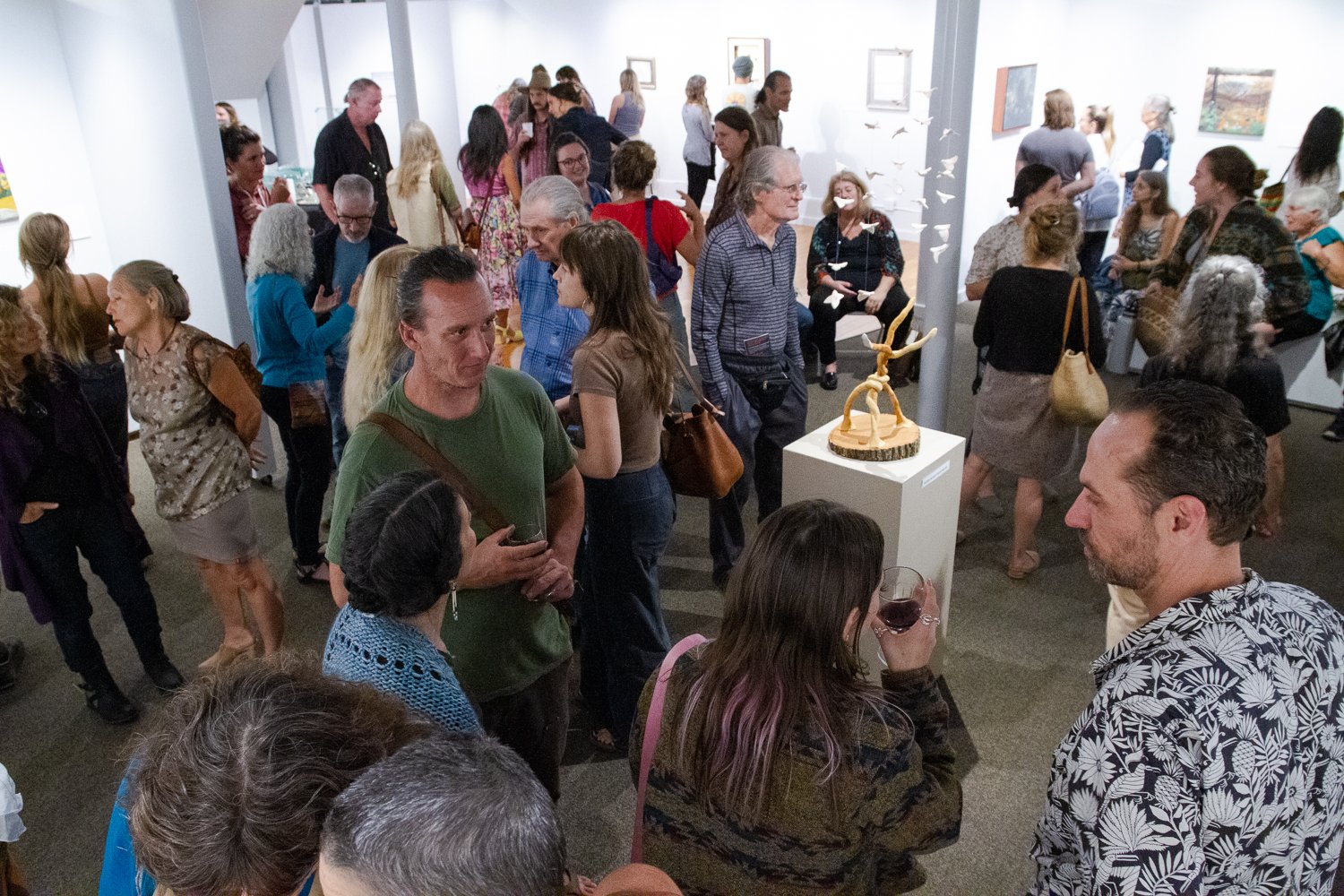
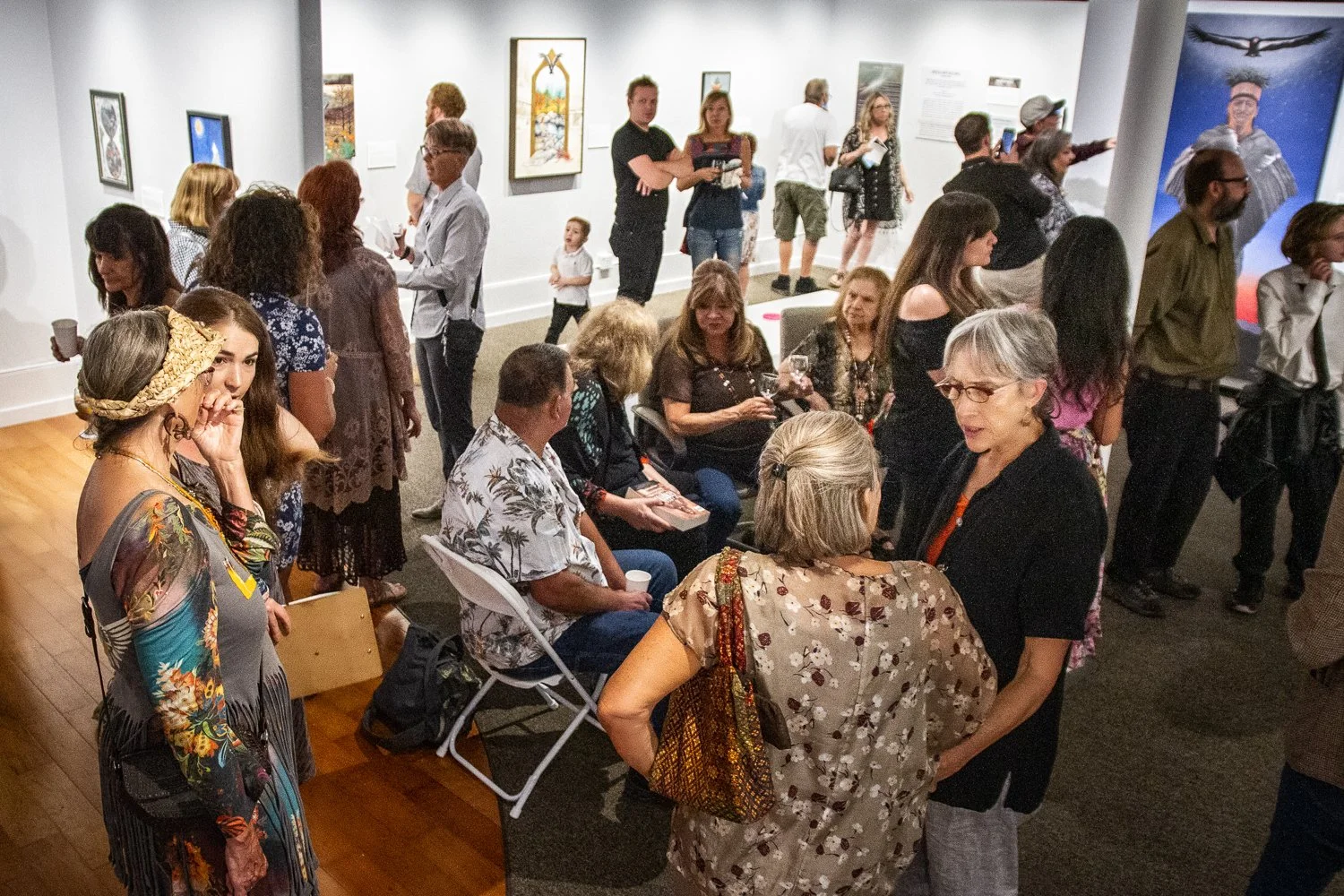
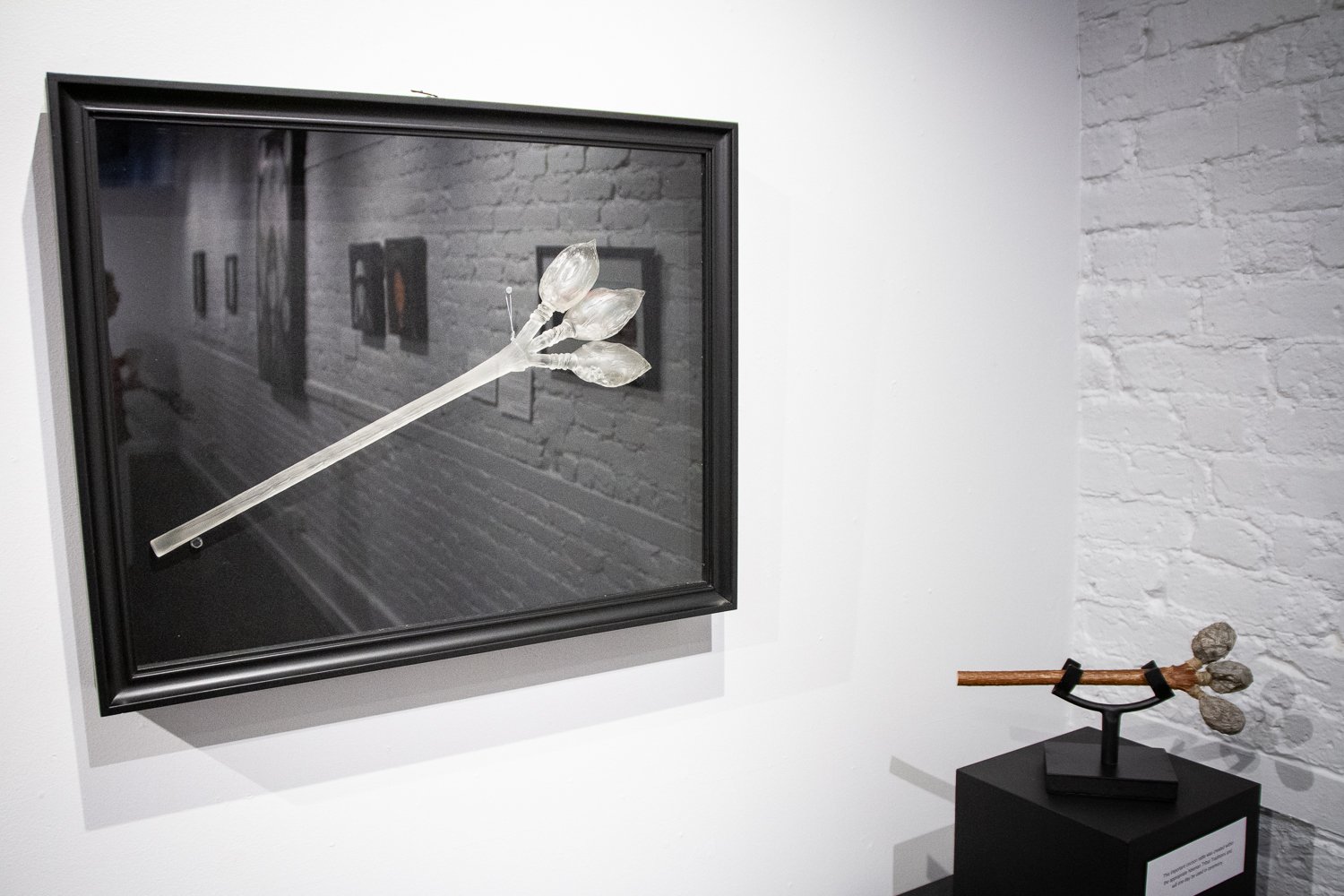




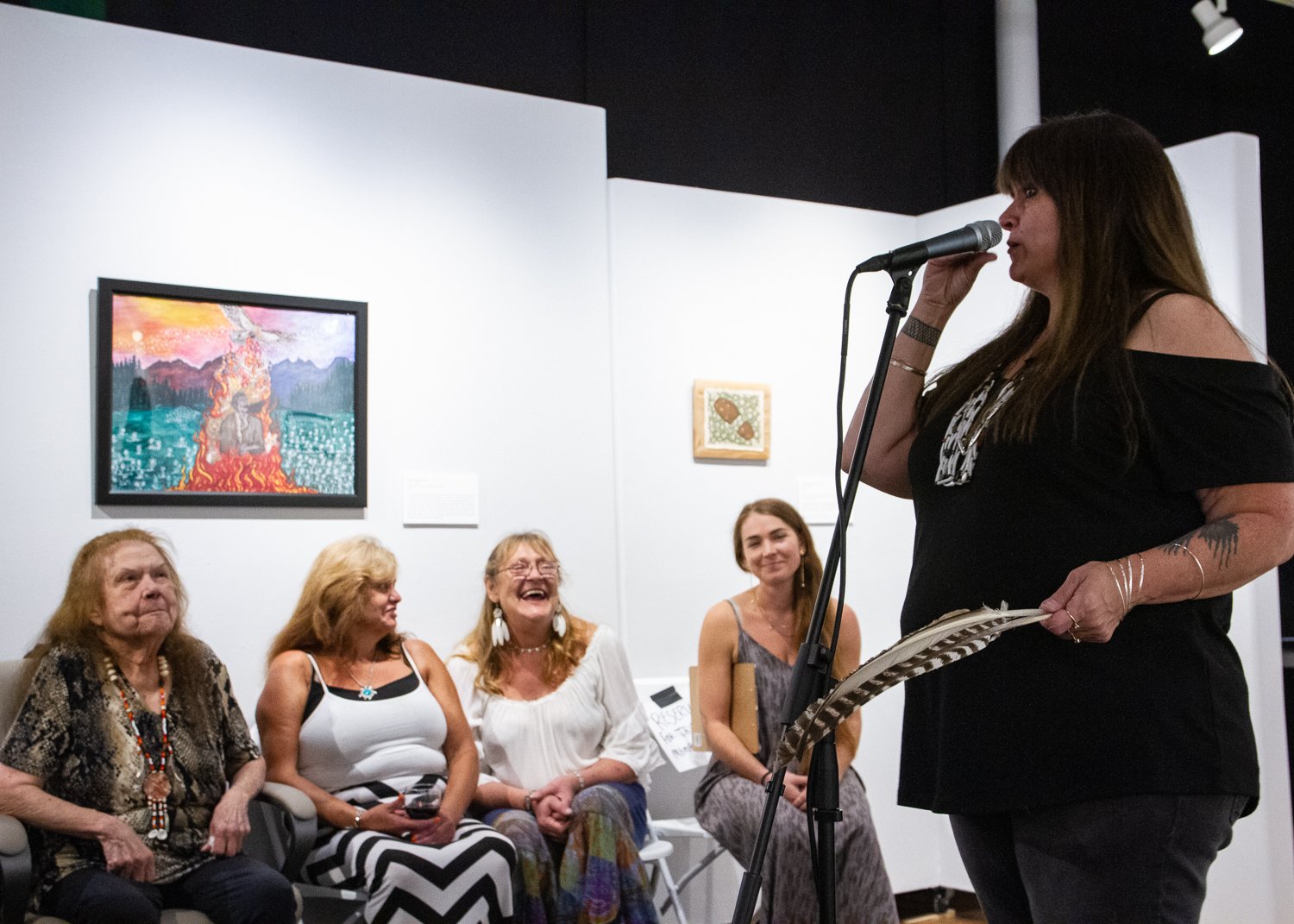
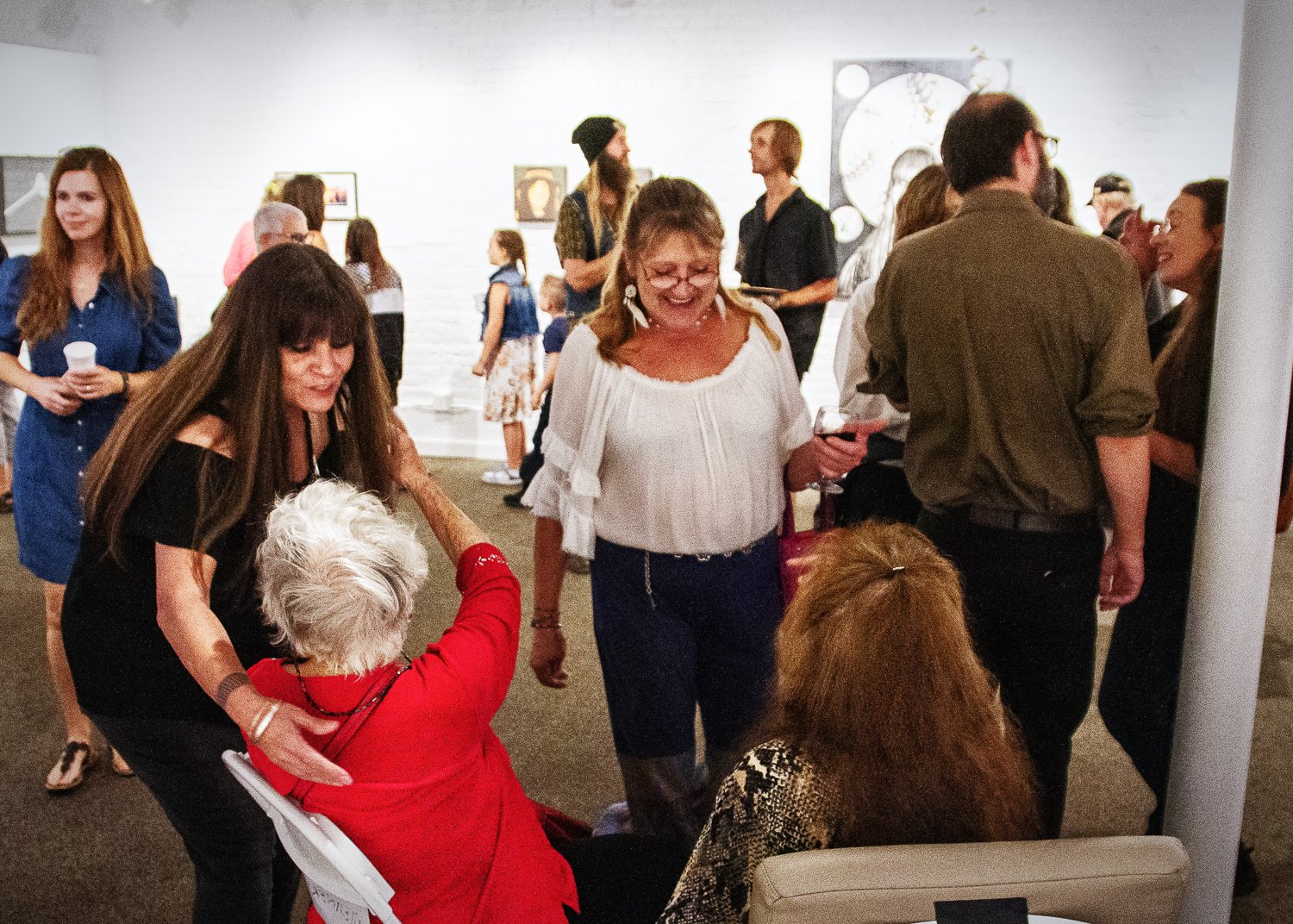
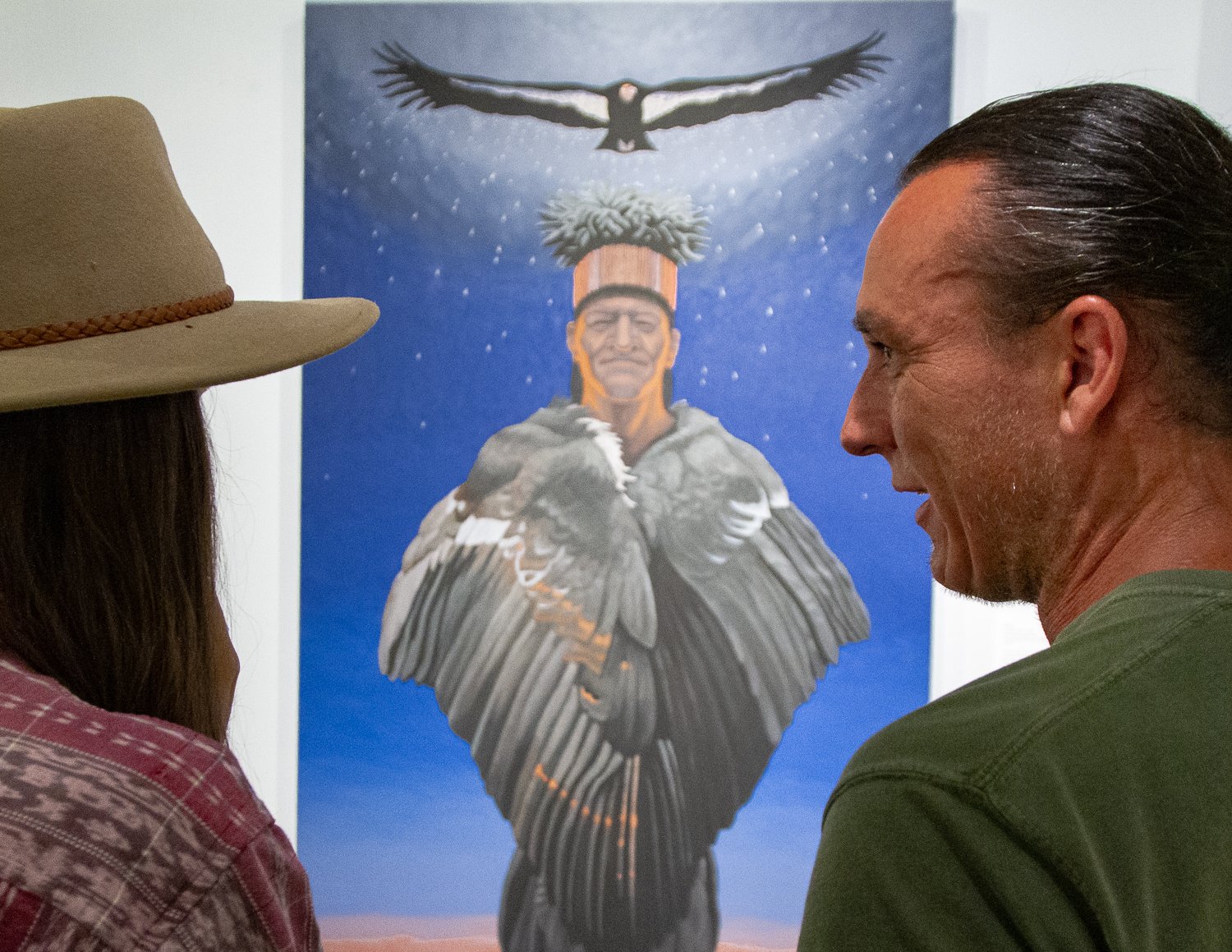




Previous VTA Exhibits
VTA art featured here in a panel on Indigenous Justice for Nisenan Heritage Day.
